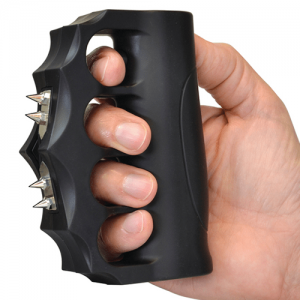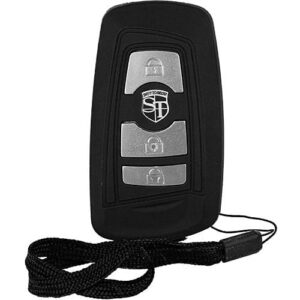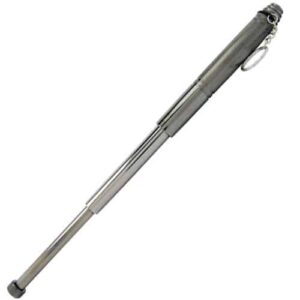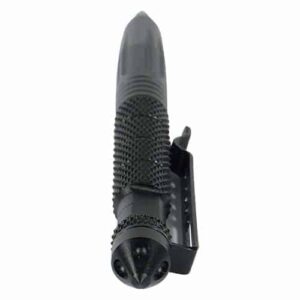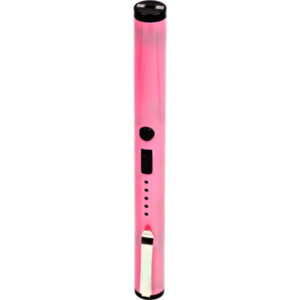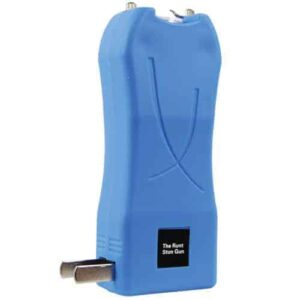Imagine a device that can incapacitate a person with just a touch, rendering them immobilized and unable to cause harm. This incredible power belongs to the tazer, a tool hailed by law enforcement for its shocking effectiveness in subduing suspects. With a simple press of a button, a tazer delivers a strong electric shock that triggers intense muscle contractions, disorienting the target and knocking them off their feet. In this article, we will delve into the astonishing power of a tazer and explore how this innovative invention has revolutionized the way authorities maintain public safety. Brace yourself for a mesmerizing journey into the electrifying world of the tazer.
Table of Contents
ToggleOverview of a Tazer
A Tazer, also known as a stun gun or conducted electrical weapon, is a non-lethal self-defense device that delivers an electric shock to temporarily incapacitate an individual. Its main purpose is to immobilize an attacker without causing permanent harm. Tazers are commonly used by law enforcement agencies, security personnel, and individuals for personal protection. They work by delivering a high-voltage, low-current electric shock that disrupts the electrical signals in the nervous system, leading to temporary muscle contractions and paralysis.
History of Tazers
Invention and Early Development
The first Tazer was invented by Jack Cover, a NASA researcher, in the 1960s. Inspired by a fictional weapon called a phaser from the TV show “Star Trek,” Cover developed the Tazer as a non-lethal alternative to firearms for law enforcement officers. His early models used gunpowder to shoot electrified darts into the target. However, these models were large and impractical, and it took several decades of development to create a more compact and effective version.
Improvements and Advancements
Over the years, Tazers have undergone significant improvements and advancements. The introduction of air cartridges in the 1990s allowed for wireless deployment of electrified darts, making Tazers more practical and user-friendly. Modern Tazers also incorporate digital technology for enhanced accuracy and safety. They feature built-in safety mechanisms, such as a limited range and automatic shut-off timers, to prevent excessive use.
Legalization and Regulation
The legalization and regulation of Tazer use vary across different countries and jurisdictions. Initially, Tazers faced skepticism and resistance, but their effectiveness in reducing injuries during law enforcement encounters led to widespread adoption. Today, the use of Tazers by law enforcement is regulated by strict policies and guidelines to ensure responsible and ethical deployment. Some states and countries have also imposed restrictions on civilian use to prevent misuse and abuse.
Effects on the Human Body
Nervous System Disruption
When a Tazer is deployed, it delivers a powerful electric shock that disrupts the normal functioning of the nervous system. The electrical impulses from the Tazer overwhelm the nervous system, causing involuntary muscle contractions and impairing the ability to control movements. This disruption can incapacitate an individual, rendering them temporarily immobile.
Muscle Contractions and Paralysis
One of the primary effects of a Tazer is the induction of muscle contractions and paralysis. The electric shock stimulates the muscles, causing them to contract rapidly and forcefully. This can render an attacker or suspect unable to move or continue their aggressive actions temporarily.
Pain and Discomfort
The electric shock delivered by a Tazer is often described as a highly painful and uncomfortable experience. The intensity of the pain can vary depending on the duration and voltage of the shock. Some individuals may experience a burning or tingling sensation, while others may feel intense muscle cramps. The pain can be debilitating and can serve as a strong deterrent to further aggression.
Physical and Psychological Aftereffects
Following exposure to a Tazer, individuals may experience various physical and psychological aftereffects. These can include fatigue, dizziness, confusion, and short-term memory loss. Some individuals may also experience emotional distress, anxiety, or post-traumatic stress. Although the effects generally subside relatively quickly, there are cases where individuals with pre-existing medical conditions or drug use have experienced more severe and long-lasting effects.
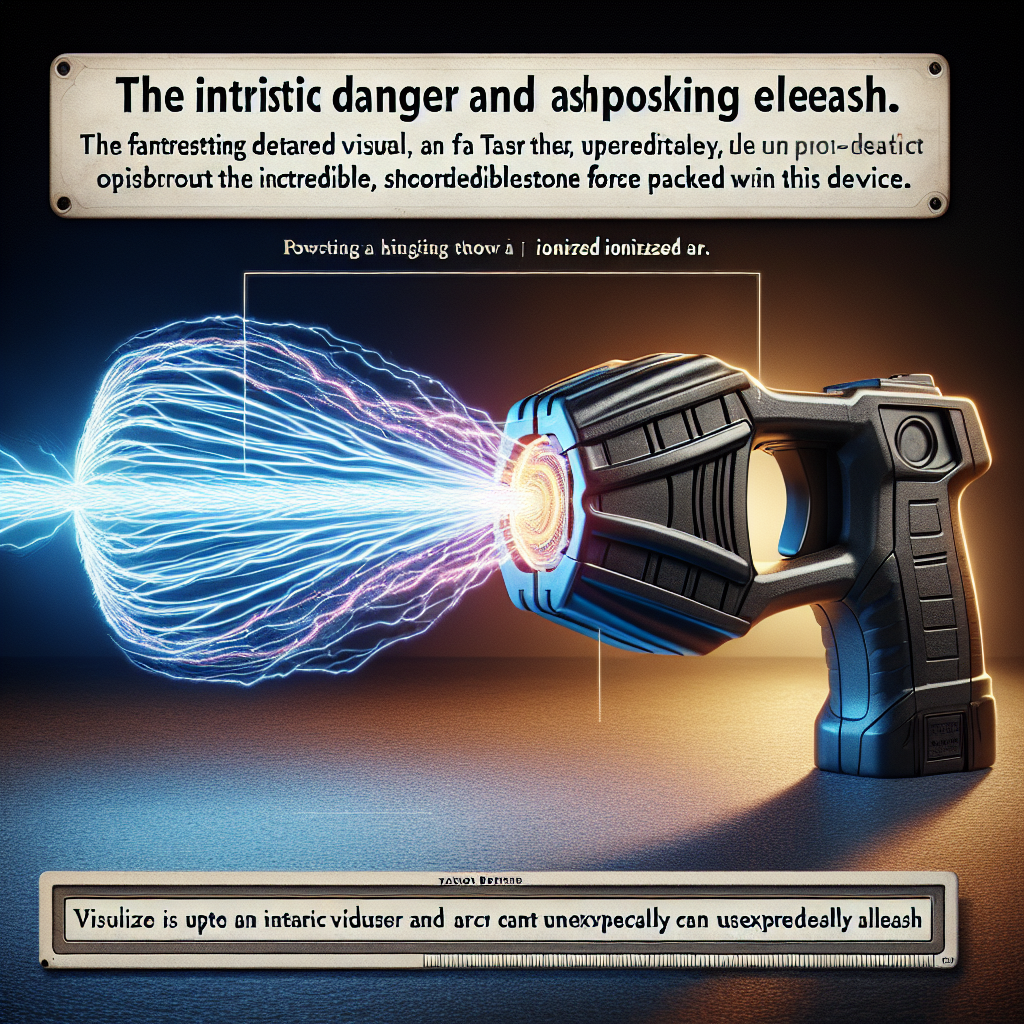
Tazer Use by Law Enforcement
Policies and Guidelines
Law enforcement agencies have established specific policies and guidelines for the use of Tazers to ensure their responsible and ethical deployment. These policies typically outline the circumstances in which a Tazer can be used, such as in situations where there is an immediate threat to the safety of the officer or others. They also emphasize the need for officers to consider alternative means of force before resorting to Tazer use.
Training and Certification
Law enforcement officers receive extensive training on the proper use of Tazers. This training includes learning about the physiological effects of Tazer deployment, understanding the potential risks and limitations, and practicing scenarios that require the use of the device. Additionally, officers must undergo certification to demonstrate their competency in handling and deploying Tazers safely and effectively.
Controversies and Ethical Concerns
The use of Tazers by law enforcement has sparked considerable controversy and ethical concerns. Critics argue that some officers have abused the use of Tazers, deploying them in situations where lethal force was not justified. There have been incidents where individuals, including those who were unarmed or mentally ill, have died as a result of Tazer deployment. This has raised questions about the appropriate use and potential risks associated with these devices.
Self-Defense and Personal Use
Legal Considerations
For individuals considering using a Tazer for personal self-defense, it is essential to be aware of the legal considerations surrounding their use. Laws regarding Tazer possession and use can vary between jurisdictions, so it is important to research and understand the regulations specific to your location. Some places may require permits or licenses, while others may completely prohibit civilian use. Familiarizing yourself with the legal framework will help ensure you use a Tazer responsibly and within the boundaries of the law.
Effectiveness as a Self-Defense Tool
When used properly, a Tazer can be an effective self-defense tool. Its ability to temporarily incapacitate an attacker from a distance provides a valuable advantage to individuals seeking personal protection. The strong electric shock delivered by a Tazer can disable an assailant, allowing the user to escape or seek help.
Proper Usage and Safety Precautions
To effectively and safely use a Tazer for self-defense, it is crucial to receive proper training and follow safety precautions. This includes understanding the device’s range, ensuring it is fully charged, and aiming for the largest target area possible. It is also essential to avoid using a Tazer near flammable substances or in wet conditions, as this may increase the risk of injury.
Tazer in Popular Culture
Depictions in Movies and TV Shows
The Tazer has made numerous appearances in movies and TV shows, often depicted as a powerful and reliable tool for incapacitating assailants. From action thrillers to crime dramas, Tazers are frequently portrayed as an effective means of subduing adversaries without inflicting lethal harm.
Impact on Public Perception
The frequent portrayal of Tazers in popular culture has influenced public perception of these devices. Many people view Tazers as a non-lethal option for self-defense and law enforcement, appreciating their potential to minimize harm in confrontational situations. However, there are also concerns that media depictions may underestimate the risks and limitations of Tazers, leading to potential misuse or overreliance.
Misconceptions and Misuse
The portrayal of Tazers in popular culture has led to some misconceptions about their capabilities and limitations. Some individuals may believe that Tazers are entirely safe and harmless, overlooking the potential risks involved. There have also been instances of civilian misuse, where individuals have used Tazers as pranks or to exert unnecessary force. This highlights the importance of education and responsible use to prevent misuse and potential harm.
Potential Dangers and Risks
Cardiac Risks
One of the significant potential dangers associated with Tazer use is the risk of cardiac complications. Although rare, the electric shock delivered by a Tazer has the potential to disrupt the normal heart rhythm and cause cardiac arrest. Individuals with pre-existing heart conditions or underlying medical issues may be more susceptible to these risks. It is crucial to consider the health of the target when deploying a Tazer to minimize the chances of cardiac complications.
Neurological Damage
There is ongoing debate and research regarding the potential long-term neurological damage caused by Tazer deployment. While current evidence suggests that the risk is relatively low, there have been cases where individuals have experienced seizures or other neurological symptoms following Tazer use. It is essential for further research to be conducted to fully understand the potential neurological risks associated with Tazers.
Injuries from Falls or Secondary Impacts
When a person is struck by a Tazer, the rapid muscle contractions can cause loss of balance and coordination, leading to potential injuries from falls or secondary impacts. It is crucial to be mindful of the surroundings and take precautions to prevent secondary injuries, especially when deploying a Tazer in close proximity to hazardous objects or in elevated areas.
Electric Shock Hazard
Tazers pose an electric shock hazard not only to the target but also to the operator if mishandled. Accidental discharge or improper handling can result in unintended shocks, potentially causing injury or even death. Proper training and adherence to safety protocols are vital to minimize the risk of electric shock and ensure the safe use of Tazers.
Alternatives to Tazers
Pepper Spray
Pepper spray, also known as OC spray, is a common alternative to Tazers for self-defense purposes. It works by releasing a concentrated solution of capsicum to irritate the eyes, nose, and throat, causing pain, temporary blindness, and difficulty breathing. Pepper spray is lightweight, easily concealable, and can be effective in incapacitating an attacker, but it requires close-range deployment and may have varying effectiveness on different individuals.
Batons and Other Impact Weapons
Batons and other impact weapons, such as extendable batons or knuckle dusters, provide an alternative means of self-defense. These devices rely on physical impact to deter or incapacitate an attacker. While less versatile than Tazers, impact weapons offer the advantage of being accessible quickly, easy to carry, and reliable for close-quarters self-defense situations.
Non-Lethal Projectiles
Non-lethal projectiles, such as rubber bullets or bean bag rounds, are used by law enforcement as an alternative to Tazers, particularly for crowd control purposes. These projectiles are designed to incapacitate or subdue individuals without causing lethal harm. They are typically fired from specialized firearms and can be effective at longer ranges than Tazers, but they require specialized training and can still cause serious injuries if used improperly.
De-escalation Techniques
De-escalation techniques form another alternative to relying solely on forceful self-defense tools. These techniques involve using verbal communication and non-threatening body language to defuse confrontations and reduce aggression. Proper training in de-escalation can be highly effective in diffusing dangerous situations without resorting to physical force or the use of self-defense tools.
Future Developments and Innovations
Longer Range and Accuracy
Future developments in Tazer technology may focus on improving the range and accuracy of the devices. This could involve advancements in wireless transmission, allowing for a greater distance between the Tazer and its target. Enhanced accuracy features, such as targeting systems or improved dart deployment, may also be explored to increase the effectiveness of Tazers while minimizing potential risks.
Improved Safety Features
Safety will likely continue to be a significant area of innovation for Tazers. Future models may incorporate advanced safety mechanisms to prevent accidental discharges, ensure optimal energy delivery, and minimize the risk of secondary impacts or injuries. These safety features aim to protect both the target and the operator, providing a more trustworthy and reliable device.
Integration with Technology
The integration of Tazers with technology could open up new possibilities for their use. In the future, Tazers may leverage advancements in biometrics, such as fingerprint recognition, to ensure that only authorized individuals can operate them. The incorporation of sensors and connectivity may enable real-time monitoring of Tazer deployments, enhancing accountability and aiding in investigations.
Conclusion
Tazers are powerful self-defense devices that have become an integral tool for law enforcement agencies and individuals seeking personal protection. Their ability to temporarily incapacitate attackers without causing lethal harm has made them a preferred alternative to firearms in many situations. However, it is crucial to balance the effectiveness of Tazers with the potential risks and ethical considerations associated with their use. Regulation, proper training, and ongoing research are necessary to ensure responsible deployment, safeguard public safety, and address concerns surrounding these devices. As technology continues to advance, future developments and innovations may further enhance the safety, effectiveness, and versatility of Tazers, allowing for more secure and responsible use. The ongoing debate and research in the field of non-lethal self-defense tools will undoubtedly shape the future of Tazers and contribute to the ongoing efforts to strike the right balance between effectiveness and safety.


